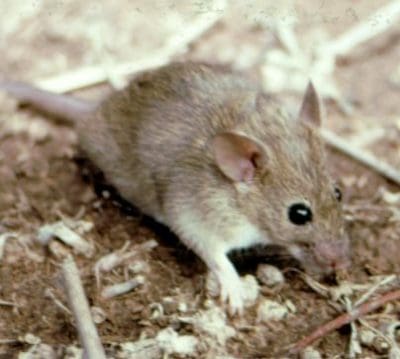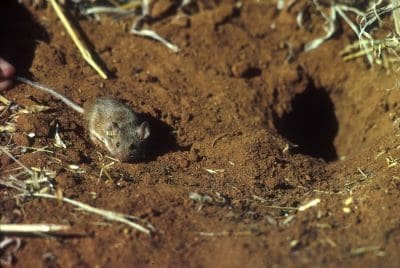THE rush is on to bring in fresh stocks of mouse bait from overseas to fill the void across Australia’s southern farming zone where mice are on the rampage and bait supplies have all but run out.
From southern NSW through western Victoria and across to the South Australian peninsulas, there is a critical shortage of bait as farmers battle a mouse plague that has flourished under the protection of heavy stubbles and spilt grain left over from last year’s bumper winter crop.
In the hotspots, producers are struggling to contain the rodents which are causing substantial damage to emerging winter crops.
Indicative of the challenge in hard-hit areas, Anna Binna Farm, which manages about 6000 hectares of farming country on the central Yorke Peninsula in SA, put out 25 tonnes of mouse bait by the end of sowing last week and has had to bait some paddocks up to five times.
Backlog of orders
Grain Producers Australia chairman, Andrew Weidemann, said there was a widespread shortage of baits and a backlog of orders for around 300 tonnes.
He said there was some bait still being mixed, but it tended to be the more expensive products and, overall, there was not enough to cover the needs “in any way, shape or form”.
Mr Weidemann said a consignment of the active ingredient for bait mix, zinc phosphide, was due to arrive by air freight into Australia tomorrow and should come on stream for farmers by the middle of next week.
“It has to go through customs and be released. That won’t happen until the middle of next week when bait can start to be mixed again,” he said.
“And there are more supplies coming out of China. That is due in by ship next week. It was already on order. The lag time has been because of the huge demand and the inability to air freight supplies in quickly. Package size of the product was a problem.”
Long term solution
Looking to the future, Mr Weidemann said research was needed to find a longer term answer than just baiting to control the pests.
 “The industry 20 years ago looked at a biological form of controlling mice and unfortunately that didn’t lead to anything that would be useful. So, we are really reliant on actives (chemicals) that can control the pest, but we are still not eliminating them from year to year,” he said.
“The industry 20 years ago looked at a biological form of controlling mice and unfortunately that didn’t lead to anything that would be useful. So, we are really reliant on actives (chemicals) that can control the pest, but we are still not eliminating them from year to year,” he said.
“It is a matter of understanding the pest and how we can better control it.
“The current approach of baiting is a short term fix, but what is the longer term solution?”
Mr Weidemann has proposed the establishment of a special authority dedicated to mouse control.
“We have a plague locust commission and possibly should be considering a mouse plague commission as a way of starting to combat this ongoing problem. Mice are more of a problem than locusts,” he said.
Population density
CRC Invasive Animals program leader, Dr Simon Humphrys, Adelaide, said mouse numbers had grown significantly since ground monitoring in March found low to moderate numbers in the NSW southern Riverina, moderate numbers in Victoria’s Wimmera through to the South Australian border, and high numbers on the Adelaide Plains and Yorke Peninsula in South Australia.
“There has been quite a bit of bait used in the northern Adelaide Plains and Mid North of South Australia addressing numbers in excess of 300-400 mice per hectare,” he said.
“In Victoria when they did the monitoring in March they were finding numbers of up to 50 mice/ha, but that has obviously increased significantly over the last six to eight weeks.”
Mr Humphrys said when farmers were monitoring their paddocks in March/April they were seeing mouse numbers that were of concern, but the level of activity was masked by heavy stubble loads.
“As the season has progressed the bumper season from last year and the stubbles that are left in the paddock have meant the extent of mouse activity wasn’t as obvious as previous plague years and caught people on the hop,” he said.
Grain Central: Get our free daily cropping news straight to your inbox – Click here



HAVE YOUR SAY